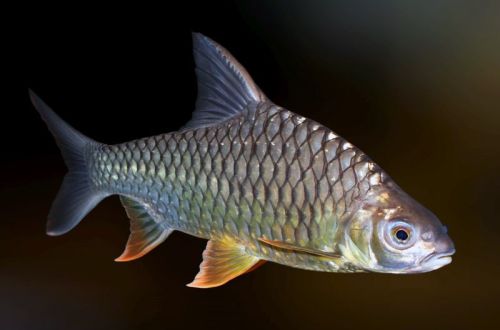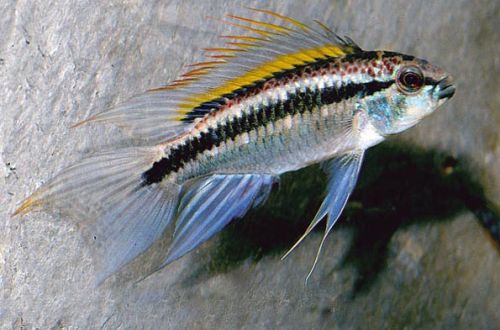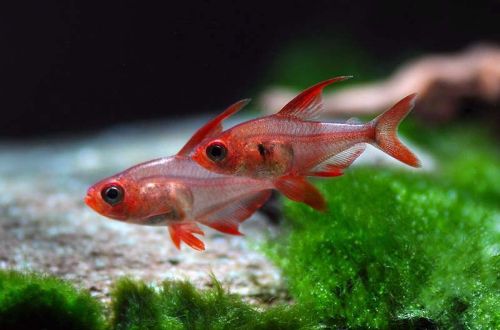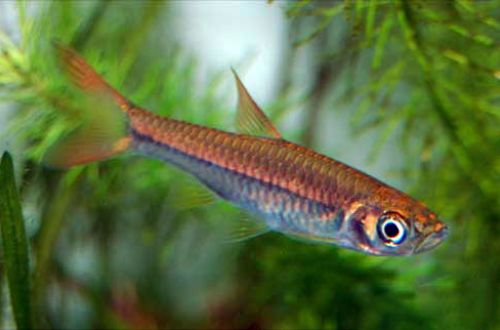
Hypsibarbus
Hypsibarbus or Lemonfin Barbus, scientific name Hypsibarbus wetmorei, belongs to the Cyprinidae family. A large active fish, lives in a flock, is easy to keep and not whimsical, however, the need to equip a large aquarium of about 400 liters can cause difficulties at home. But this is not a problem for large public aquariums, due to their silvery color and not small size, a flock of these fish will attract the attention of the public, for example, in a cafe, restaurant or some kind of spa, etc.

Contents
Habitat
It comes from the mainland of Southeast Asia, from the territory of such modern states as the southern part of China, Laos, Thailand, Cambodia and Vietnam. It lives in numerous rivers and their tributaries, including the Mekong, the largest river in Indochina. Prefers flowing water with abundant coastal vegetation, avoids stagnant water.
Description
A rather large fish, adults reach a length of 21 cm, while females are larger than males, this is where the differences end. The body coloration is silvery with large scales, which often have a dark edging. The characteristic lemon-orange coloration is inherent only to the lower fins, the dorsal and caudal fins are colorless.
Food
They accept all types of dry (flakes, granules), frozen and live foods (bloodworms, insect larvae, earthworms) with a large number of herbal supplements. The main condition is that the food should be varied, never feed the fish with the same products for a long time, combine, combine different additives, etc.
Feed 2-3 times a day in the amount eaten in 5 minutes, all uneaten leftovers should be removed in a timely manner to prevent water pollution.
Maintenance and care, arrangement of the aquarium
The choice of decor is not as important as the quality of the water and the amount of open space for swimming. The lemonfin barb will also thrive in an almost empty tank. However, if funds allow, it is possible to equip the aquarium in the form of a section of a large river, placing large smooth stones, boulders on the gravel bottom, along one of the side walls to place dense thickets of strong plants with a powerful root system.
Like any fish that comes from flowing waters, the Barbus does not tolerate the accumulation of organic waste and requires very clean water with a rich content of oxygen, so there are increased requirements for the filtration system. Other minimum equipment required includes a heater, lighting fixtures, and an aerator with a few pebbles.
Maintenance consists in weekly replacement of part of the water (15–20% of the volume) with fresh water and regular cleaning of the substrate from organic waste.
Behavior and Compatibility
A schooling non-aggressive species, very friendly to fish of similar size and temperament if there is sufficient free space. It is highly active, so
you should not settle with slow moving or timid fish, in addition, small species can become an object of hunting.
Breeding / breeding
The organization of spawning at home is very problematic, therefore, breeding is carried out in specialized fishing farms, mainly in the homeland of the Lemonfin Barbus.
Fish diseases
The main cause of disease for the vast majority of aquarium fish is the content in unsuitable conditions or poor water quality. Compliance with all requirements and timely maintenance of the aquarium reduces the risk of diseases to an imaginary one. Nevertheless, in the event of a problem with the health of fish, it is sometimes not enough to return the conditions of detention to normal, you will have to use medicines, and for this you need to determine what to treat. Read more about symptoms and treatments in the Aquarium Fish Diseases section.





